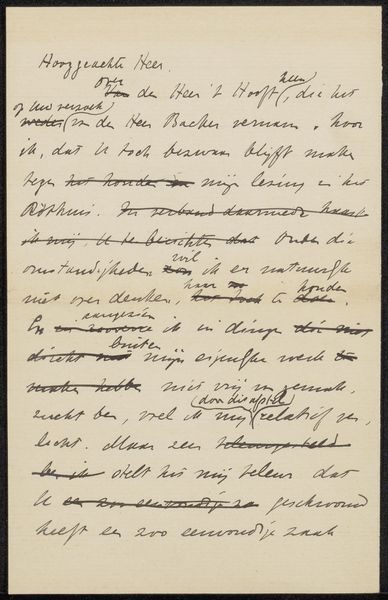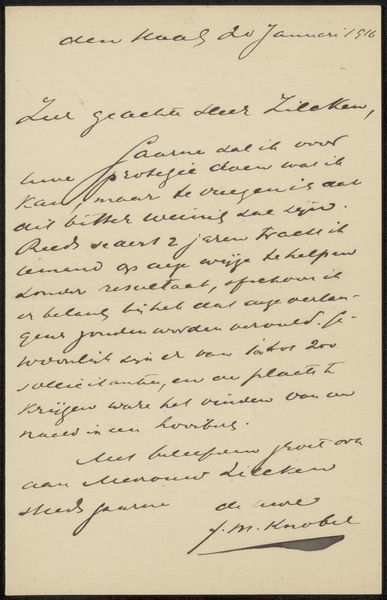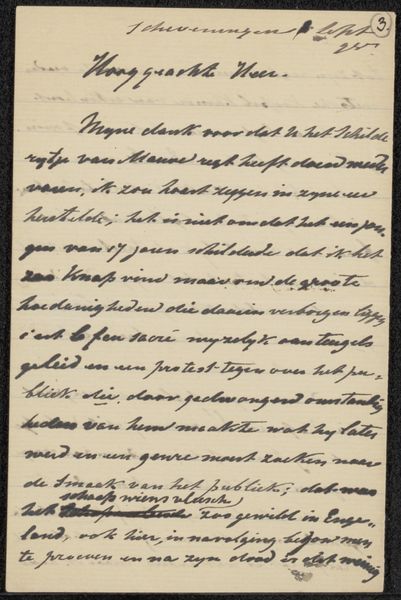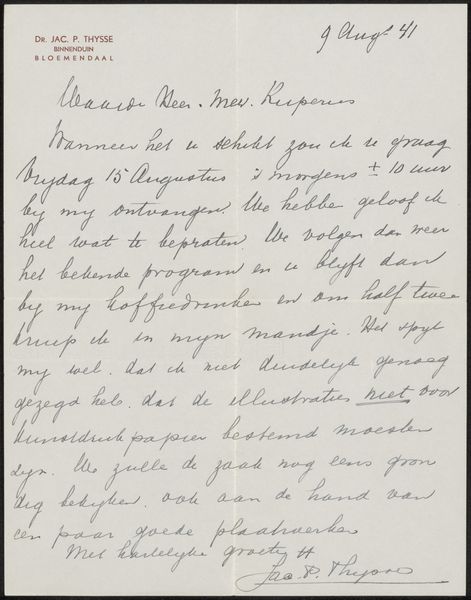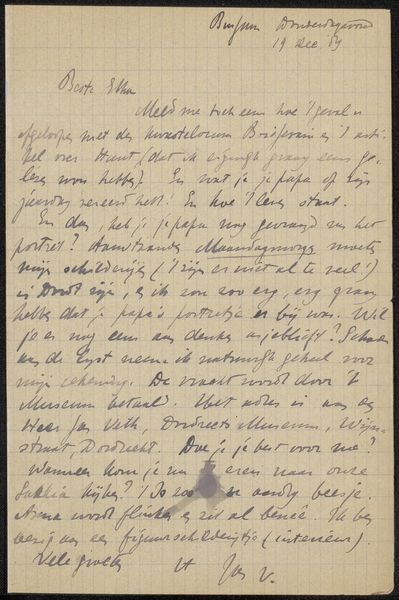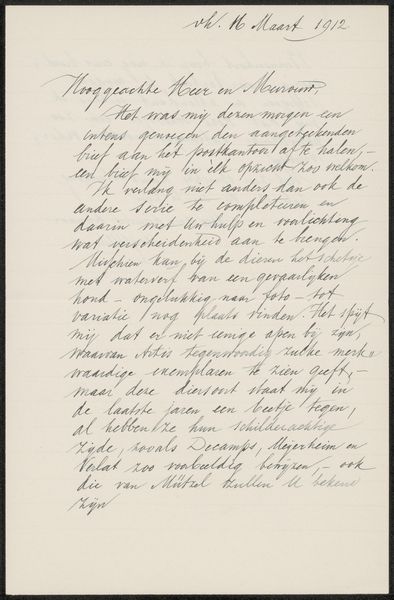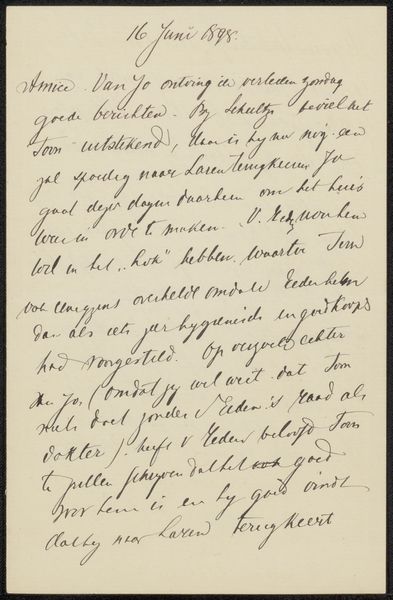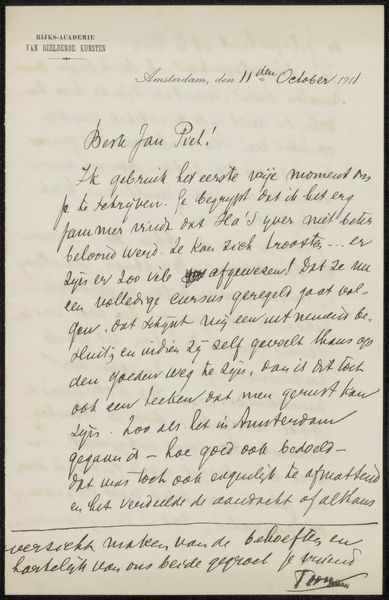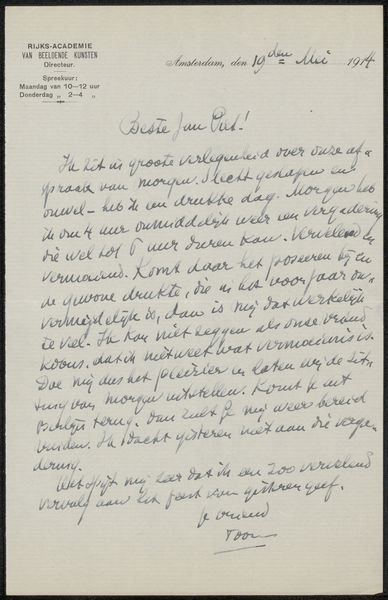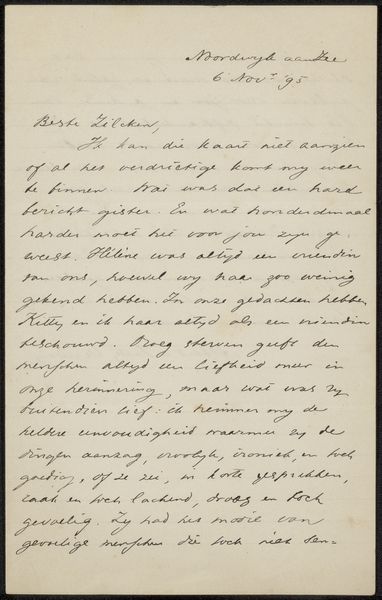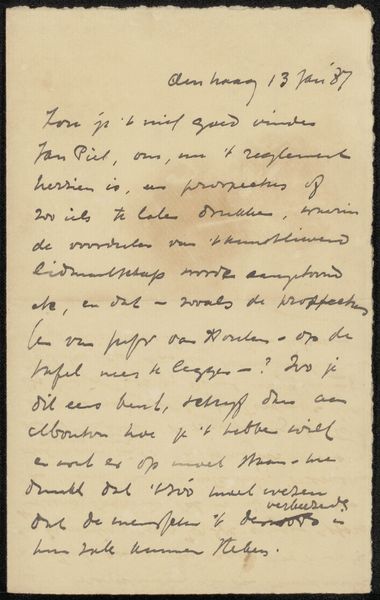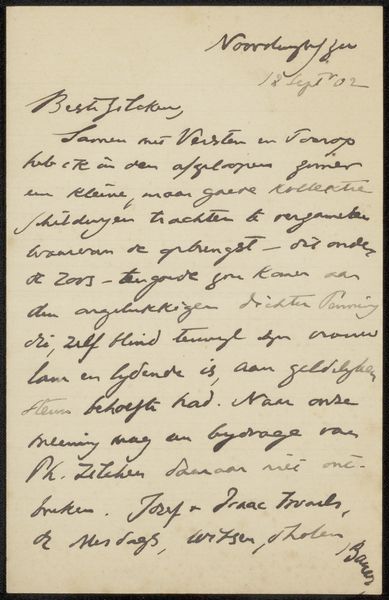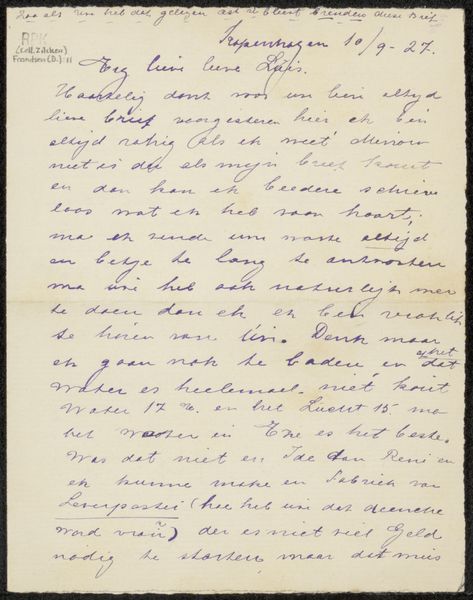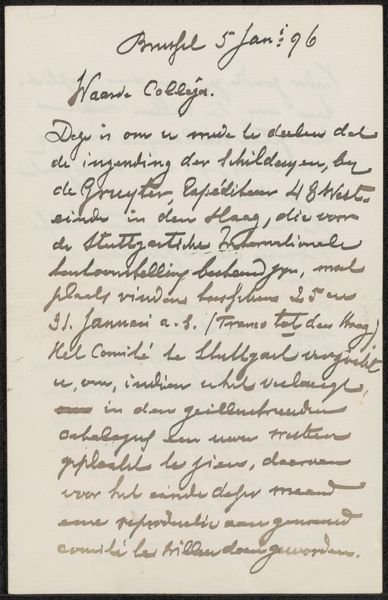
drawing, paper, ink, pen
#
drawing
#
pen drawing
#
pen sketch
#
hand drawn type
#
paper
#
ink
#
pen work
#
pen
Copyright: Rijks Museum: Open Domain
Editor: Here we have Albert Verwey's "Brief aan Philip Zilcken," likely from the early 1900s, created with ink on paper. The handwriting gives it such a personal, intimate feeling, yet it's also somewhat difficult to decipher. How do you read this piece, considering its historical context? Curator: Well, let's consider the role of correspondence in that period. Before email and instant messaging, letters were vital. This letter, penned in ink, is not just a personal message; it's a physical object imbued with social and cultural significance. The very act of handwriting, the choice of paper and ink, all reflect a particular social milieu. Notice the date at the top: 20 Maart 1900. That locates it within a specific moment in history. Editor: So, it’s more than just what the letter *says*? Curator: Exactly. Who were Verwey and Zilcken? Understanding their relationship, their positions within the art world, informs our interpretation. Was this a business communication? A friendly note? Understanding their relationship helps us contextualize the power dynamics at play. Even the handwriting, the neatness or lack thereof, speaks to the level of formality. It's like reading a social map embedded within the text. Editor: That's fascinating. So the letter itself becomes almost like a social artifact, revealing the relationship between the two people. Curator: Precisely. And consider the institutions that may have shaped their views - academies, salons, publications. What role did those play in how they perceived art and communicated about it? That's what makes even a seemingly simple letter a rich source of information for understanding the social and cultural history of art. Editor: This really encourages us to consider the broader implications of such personal artifacts! I'm left thinking about how we can glean hidden narratives about art from mundane objects.
Comments
No comments
Be the first to comment and join the conversation on the ultimate creative platform.
